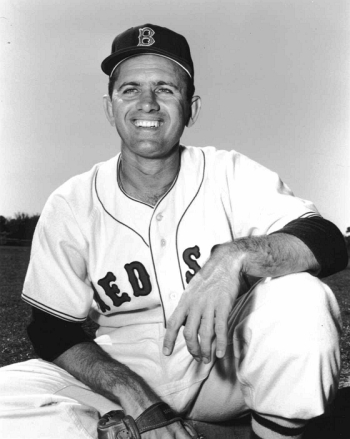|
Today in New Orleans History |
|
|
March 20


 Mel Parnell Written
by S. Derby Gisclair Born in New Orleans on June 13, 1922, Mel Parnell attended S. J. Peters
High School. After high school he was recruited by Red Sox farm system director Herb Pennock. He spent two years in the minor
leagues (1941 and 1942), then joined the Army Air Corps during World War II. Three years of military service (1943–1945)
found Parnell playing ball in Arkansas, Tennessee, and Alabama, where he played on many Southern Association clubs and other
service teams. His club won the Eastern Flying Training Command championship. He was assigned as a crewman aboard B-29 aircraft
while stationed at Maxwell Air Force Base in Alabama. Parnell played one more season in the minors
in 1946 before making his major-league debut on April 20, 1947. After an undistinguished rookie season, he joined
Boston’s starting rotation (along with fellow New Orleanian Jack Kramer) in 1948. He won fifteen games, lost eight,
and recorded an earned run average of 3.14, helping the Red Sox to a second-place finish behind the Cleveland Indians. Parnell was an All-Star in 1949, his best season in the majors, winning a league-leading twenty-five
games and losing only seven. He would return in 1951. He was very successful at home in Fenway Park, using his baffling
inside slider to tame right-handed hitters. Although he spent his final three seasons (1954–1956) fighting a
bad elbow, on July 14, 1956, Parnell pitched the first first no-hitter in more than thirty-three years
for the Red Sox against the Chicago White Sox, winning 4–0. Just months later, however, a torn muscle in his throwing
arm would end his career. Parnell returned to New Orleans to try his hand at managing, first as the
head coach of the Tulane University team in 1958, then as the manager of the New Orleans Pelicans in what would become their
final season in 1959. But not even Parnell’s considerable reputation or personal charm could breathe life into the dying
franchise. Parnell remained in New Orleans, engaging in a number of successful business ventures and
working as a broadcaster. He gave freely of his time: visiting with his baseball friends, making personal appearances, granting
the occasional interview, and inspiring young left-handed pitchers everywhere. Parnell was inducted
into the Louisiana Sports Hall of Fame in 1963 and the Boston Red Sox Hall of Fame in 1997. He died on March 20, 2012,
in New Orleans after a long battle with cancer. Article by S. Derby Gisclair, author of  

To receive an update for each day in New Orleans
history, join our facebook page
- Today in New Orleans History
The Norman Mayer ("Gentilly") Branch of the New Orleans Public Library, first opened on March 27, 1949. Demolished due to major flooding, it was rebuilt and re-opened March 20, 2012.
Doctor Norman Christopher Francis, born on March 20, 1931 in Lafayette, is the president
of Xavier University of Louisiana. He has been Xavier's president since 1968, making him (as of August 2012) the longest-tenured
current leader of an American university and the only lay (non-clergy) president of Xavier. Francis is also the chairman of
the Louisiana Recovery Authority, the state agency in charge of planning the recovery and rebuilding of Louisiana after Hurricane
Katrina and Hurricane Rita. On November 21, 2008, Francis celebrated his 40th year as President of Xavier University
at the 40th Anniversary Gala, themed "Legacy for a Legend" at the Ernest N. Morial Convention Center. The event
was hosted by Bill Cosby, and featured a performance by Grammy winner Gladys Knight.
|
|
|

To receive an update for each day in New Orleans history,
join our facebook page - Today in New
Orleans History.
Analytics |
 One of three left-handed pitchers from the same city block in New Orleans to make it to the major leagues—the others
being Howie Pollett and Larry Lasalle—Mel Parnell had a stellar ten-year career as a pitcher for the Boston Red Sox.
Best remembered for the no-hitter he pitched against the Chicago White Sox in 1956, Parnell retired at the end of
that season due to an elbow injury. With a career record of 123 wins and 75 losses, he won more games than any other left-hander
in Red Sox history.
One of three left-handed pitchers from the same city block in New Orleans to make it to the major leagues—the others
being Howie Pollett and Larry Lasalle—Mel Parnell had a stellar ten-year career as a pitcher for the Boston Red Sox.
Best remembered for the no-hitter he pitched against the Chicago White Sox in 1956, Parnell retired at the end of
that season due to an elbow injury. With a career record of 123 wins and 75 losses, he won more games than any other left-hander
in Red Sox history.

